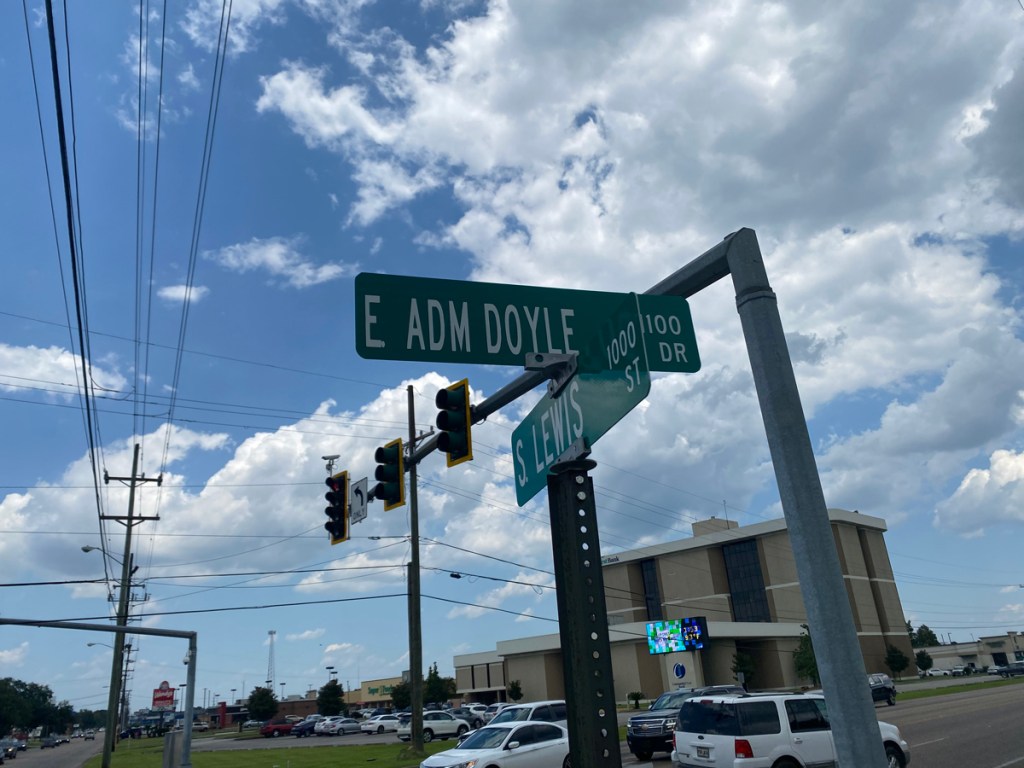Admiral Doyle Drive has roots in 1830s legislative acts requiring landowners to establish roads
Published 6:45 am Sunday, January 31, 2021

- Admiral Doyle Drive in New Iberia grew out of a series of 40 Arpent Roads, which were establisehd 40 Arpents (roughly 40 acres) distant from Bayou Teche.
If you’re from New Iberia, you’ve probably driven down Admiral Doyle Drive a million times. Near the heart of New Iberia it’s filled with strip malls and is almost reminiscent of big city life, while on the outskirts it’s a mellow and secluded roadway where you can turn up the radio and just take in the small town beauty.
But it sure was a lot different in 1833.
To understand why Admiral Doyle Drive was even built one needs to understand what Southwest Louisiana looked like prior to 1833. According to archived documents written by the Attakapas Historical Association titled “Attakapas Gazette,“ travelling around Acadiana by land was no easy task. There were very few roads, and certainly no public roads running the Bayou Teche, so going from one city to another was not only an exercise in frustration, but a one-way ticket to a premature death for those who weren’t rugged frontiersmen.
This was especially a problem for ranchers, who needed to navigate their cattle to steamboat docks to get them to market. This meant traveling through private property, and ranchers had to pay hefty fees to get landowners to agree to let them pass through their land.
To remedy this issue, A.B. Roman, the governor at the time, signed an order issued by the Louisiana legislature requiring that anyone who wanted to enclose an area larger than 5 arpents — a French measurement of distance that is about roughly an acre — within 40 arpents of an already enclosed area would need to build and maintain a road at the parish’s expense.
According to Historian Shane Bernard, the legislature chose this measurement because 40 arpents was roughly the size of a typical plantation at the time, placing the road right along the property lines.
As a result a series of roads called “40 Arpents Road” started popping up around Louisiana. However, this did not immediately result in a road bordering the Teche.
It wasn’t until 1836 when the Louisiana government passed an act mandating that “any
proprietor … on the shores of Bayou Teche (in St. Martin Parish) shall be bound to deliver a road known as the public road, and the same shall be permanent.” The next year the act was amended to specify that a road must be built and maintained at “every depth of forty arpents.”
After this series of laws, a 40 arpents road was built along the Teche, which over the course of many years went from a humble road made from either dirt, gravel or shell, according to Bernard, to the paved and well developed roadway like it is today.
In addition, New Iberia developed a 20 Arpent Road between present-day Admiral Doyle Drive. and the Bayou Teche. It bears the same name today and is indeed roughly 20 acres from Teche and Admiral Doyle Drive.





